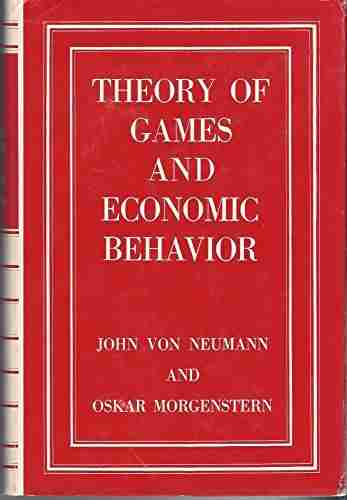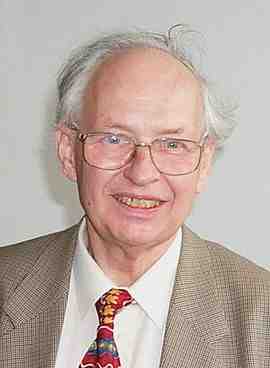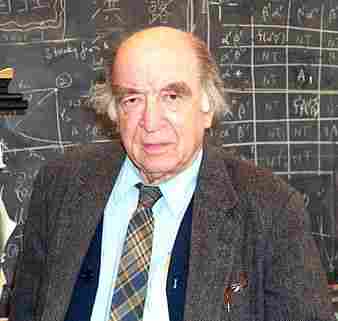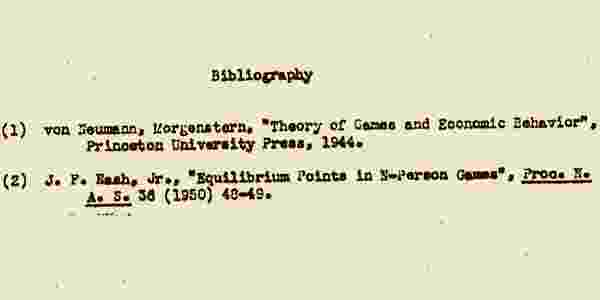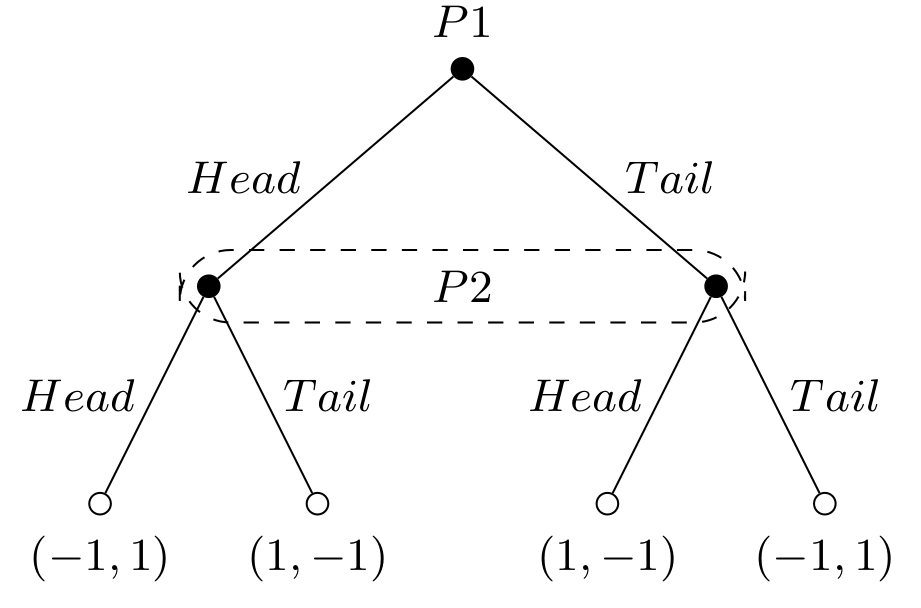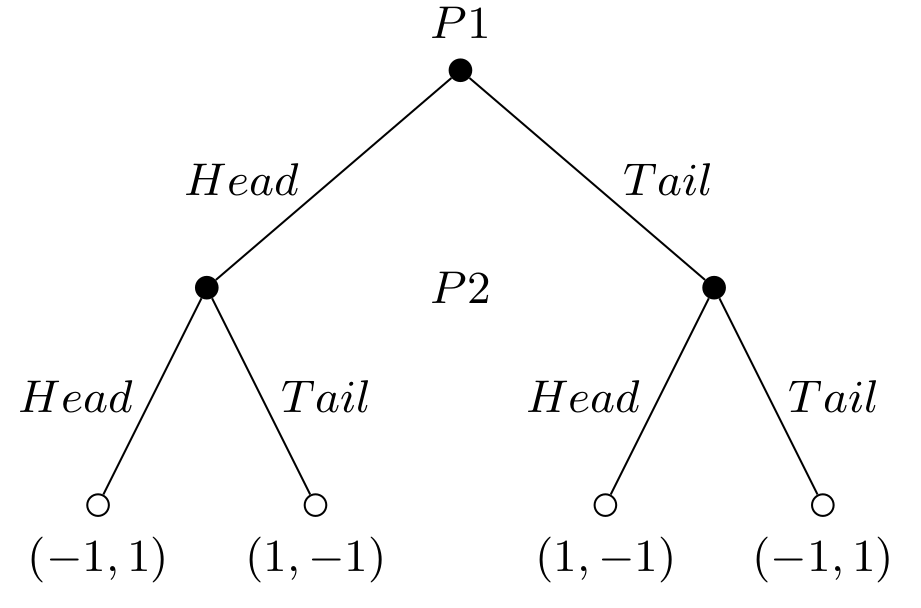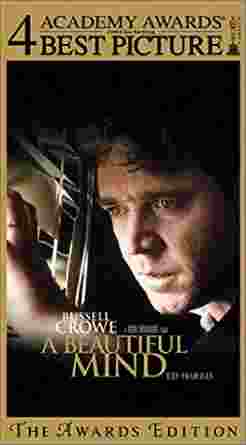8 Games
Game theory is the study of mathematical models that describe strategic interactions among rational decision-makers. Specifically, it analyzes how two or more players make decisions in situations where their choices affect one another’s outcomes. In these scenarios, each player’s actions influence the payoffs of others, and vice versa, creating interdependence. As in the models discussed earlier, game theory assumes that players act rationally, seeking to maximize their own benefits. This framework allows for economic research through laboratory experiments or real-world field studies.
Game theory is not just an academic exercise; it has practical applications in real market situations and various human interactions. It is used across all fields of science including social science and computer science. In the 21st century, game theory has expanded to cover a wide range of behavioral relationships and is now an umbrella term for the study of logical decision-making in humans, animals, and machines.
Modern game theory began with the idea of mixed-strategy equilibria in two-person zero-sum games and its proof by John von Neumann. His work and in particular his jointly written with Oskar Morgenstern from 1944 Theory of Games and Economic Behavior (see Figure 8.1) which considered cooperative games of several players was the beginning of modern game theory. The second edition of this book provided an axiomatic theory of expected utility, which allowed mathematical statisticians and economists to treat decision-making under uncertainty.
Game theory has been widely recognized as an important tool in many fields. As of 2014, with the Nobel Memorial Prize in Economic Sciences going to game theorist Jean Tirole, eleven game theorists have won the economics Nobel Prize including Reinhard Selten from Germany together with John Harsanyi and John Nash in 1994, see Figure 8.2.
8.1 Structure of games
8.1.1 Elements
The elements of a game include several key components that define its structure and dynamics. First, there is the number of players, which indicates how many individuals or entities are involved in the game. Each player has a specific set of strategies and alternative actions available to them, which can significantly influence the game’s outcome.
Additionally, the payoff functions determine the rewards or penalties that players receive based on the actions taken, reflecting their preferences and objectives. The state of information is also crucial, as it outlines what each player knows about the game, including the actions of other players. Lastly, the timing of actions and information plays a vital role, as it affects the decisions made by players and the overall flow of the game. Understanding these elements is essential for analyzing strategic interactions effectively.
8.1.2 Classes
Games can be categorized into various classes based on their characteristics:
- Cooperative vs. Non-cooperative: Cooperative games allow players to form binding commitments, while non-cooperative games do not.
- Static vs. Dynamic: Static games are played in a single time period, whereas dynamic games unfold over multiple periods, with players potentially adapting their strategies over time.
- One-shot vs. Repeated: One-shot games are played once, while repeated games involve the same players playing multiple rounds, allowing for strategy adjustments based on previous outcomes.
- Non-zero-sum vs. Zero-sum: In zero-sum games, one player’s gain is another’s loss, while non-zero-sum games allow for outcomes where all players can benefit or suffer together.
- Perfect Information vs. Non-perfect Information: Perfect information games allow players to know all previous actions, whereas non-perfect information games involve some level of uncertainty about other players’ actions.
- Symmetric Information vs. Asymmetric Information: In symmetric information games, all players have access to the same information, while asymmetric information games involve players having different information.
- Deterministic vs. Non-deterministic Payoffs (Random): Deterministic payoffs yield consistent outcomes for given strategies, while non-deterministic payoffs involve randomness and variability in outcomes.
8.1.3 Representations
8.1.3.1 Normal form
The normal form of a game is a matrix representation that captures the strategic interactions between players who choose their strategies simultaneously. It lists each player’s possible strategies and the resulting payoffs for each combination of strategies. This format helps identify dominant strategies and Nash equilibria, making it useful for analyzing static games.
The matrix provided in Table 8.1 is a normal-form representation of a game in which players move simultaneously (or at least do not observe the other player’s move before making their own) and receive the payoffs as specified for the combinations of actions played.
| Person B - work | Person B - shirk | |
|---|---|---|
| Person A - work | 10 ; 10 | 5 ; 11 |
| Person A - shirk | 11 ; 5 | 6 ; 6 |
In the example of Table 8.1, two workers, A and B, have to make the choice to shirk or to work hard. In the following, I describe how to solve the decision for each person. The trick is to find the best answer of each person in whatever the other one is doing.
To solve the game represented in the normal-form table, follow these steps:
Identify strategies: Each player (Person A and Person B) has two strategies: “work” or “shirk.”
Payoff matrix: The matrix shows the payoffs for both players based on their chosen strategies:
- If both work, the payoffs are (10, 10).
- If A works and B shirks, the payoffs are (5, 11).
- If A shirks and B works, the payoffs are (11, 5).
- If both shirk, the payoffs are (6, 6).
Determine dominant strategies: A dominant strategy is one that yields a higher payoff regardless of the other player’s action.
For Person A:
- If B works, A gets 10 by working and 11 by shirking (so shirking is better).
- If B shirks, A gets 5 by working and 6 by shirking (so again, shirking is better).
- Thus, A’s dominant strategy is to shirk.
For Person B:
- If A works, B gets 10 by working and 11 by shirking (so shirking is better).
- If A shirks, B gets 5 by working and 6 by shirking (so again, shirking is better).
- Thus, B’s dominant strategy is to shirk.
Nash Equilibrium: The Nash equilibrium occurs when both players choose their dominant strategies. In this case, both will choose to shirk: Payoffs at this equilibrium are (6, 6).
Conclusion: Both players have a strong incentive to shirk, leading to a Nash equilibrium with both receiving a payoff of 6.
This analysis shows how rational decision-making can lead to outcomes that may not be optimal for either player collectively, highlighting the potential for suboptimal outcomes in strategic interactions.
8.1.4 Extensive form
The extensive form in game theory is a way to represent games that captures the sequence of moves by players, their available choices at each point, and the information they have when making decisions. Unlike the normal form, which shows all strategies and payoffs in a matrix, the extensive form uses a tree diagram to show how a game unfolds over time. Each branch represents a possible action, and the endpoints show the payoffs for different outcomes. This format also accounts for chance events and imperfect information, making it useful for analyzing dynamic, sequential decision-making scenarios.
8.2 Nash equilibrium
8.2.1 John Forbes Nash Jr. (1928-2015)
John Forbes Nash Jr. (1928-2015) had an extraordinary life which ended tragically in a car accident after having received the Abel Prize. In Figure 8.8 you see the real John Nash as well as actor Russel Crowe who plays him in the movie A Beautiful Mind. To get known to John Nash and his contributions, read his Wikipedia entry, watch the following videos, and read the Nobel prize award ceremony speech below.
8.2.2 Nash equilibrium
To find a Nash equilibrium in a normal form game as shown in Table 8.3, we can look for the best responses for both players in a game. We do so by putting a star next to the payoff attained by the best response of a player for all the strategies of the other player. For example, we put a star next to the 4 because S1 is the best response by Player B to the action S1 of Player A.
Notice that the bottom right corner box has a particular feature: it shows that the strategies played by all the (two) players and resulting in that outcome are best responses to the others’ players best responses. That defines a Nash equilibrium.
| Person B | ||||
|---|---|---|---|---|
| S1 | S2 | S3 | ||
| Person A | S1 | 0 ; 4* | 4* ; 0 | 5 ; 3 |
| S2 | 4* ; 0 | 0 ; 4* | 5 ; 3 | |
| S3 | 3 ; 5 | 3 ; 5 | 6* ; 6* |
8.2.3 The prisoner’s dilemma
The prisoner’s dilemma is the most well-known example of game theory. It shows why two completely rational individuals might not cooperate, even if it appears that it is in their best interests to do so.
Consider the example of two criminals arrested for a crime. Prosecutors have no hard evidence to convict them. However, to gain a confession, officials remove the prisoners from their solitary cells and question each one in separate chambers. Neither prisoner has the means to communicate with each other. The criminals are now confronted by the officials with four possible scenarios:
- If both confess, they will each receive an eight-year prison sentence.
- If Prisoner 1 confesses, but Prisoner 2 does not (he aims to cooperate with Prisoner 1), Prisoner 1 will go free and Prisoner 2 will get twenty years.
- If Prisoner 2 confesses, but Prisoner 1 does not (he aims to cooperate with Prisoner 1), Prisoner 1 will get twenty years, and Prisoner 2 will go free.
- If neither confesses, each will serve two years in prison.
The corresponding normal form of the game is shown in Table 8.4.
| Person B | |||
|---|---|---|---|
| Confess | Cooperate | ||
| Person A | Confess | 8 years ; 8 years | 0 years ; 20 years |
| Cooperate | 20 years ; 0 years | 2 years ; 2 years |
The scenario is also explained in this video
Let us now look at how individuals would rationally decide what to do:
- If A assumes that B confesses, A would also confess.
- If A assumes that B cooperates, A would still confess.
Since the same logic applies for B, we can conclude that the strategy of choice is to confess, even though the most favorable strategy for both would be to cooperate. The game-theoretical equilibrium (both confess) in this game can be called a Nash equilibrium because it suggests that both players will make the move that is best for them individually, even if it is worse for them collectively.
